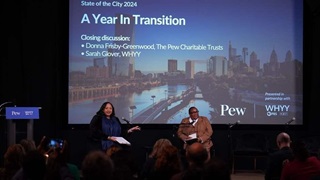Ocean, People, Planet: Cultivating Conservation
Episode 116

Stat: 680 million—According to the United Nations, about 680 million people live in low-lying coastal zones around the world, a number expected to increase to 1 billion by 2050.
Story: In this episode, we explore how communities that rely on a healthy ocean are working to create marine protected areas (MPAs) to preserve biodiversity—and their livelihoods. In addition to hearing from Ludovic Burns Tuki, a community leader on Easter Island, home to the Rapa Nui MPA, we speak with Johnny Briggs from the Pew Bertarelli Ocean Legacy about the role of MPAs in restoring the ocean and safeguarding cultural traditions tied to the seas.
Related resources:
MORE FROM PEW
Explore Pew’s new and improved
Fiscal 50 interactive
Your state's stats are more accessible than ever with our new and improved Fiscal 50 interactive:
- Maps, trends, and customizable charts
- 50-state rankings
- Analysis of what it all means
- Shareable graphics and downloadable data
- Proven fiscal policy strategies
Welcome to the new Fiscal 50
Key changes include:
- State pages that help you keep track of trends in your home state and provide national and regional context.
- Interactive indicator pages with highly customizable and shareable data visualizations.
- A Budget Threads feature that offers Pew’s read on the latest state fiscal news.















